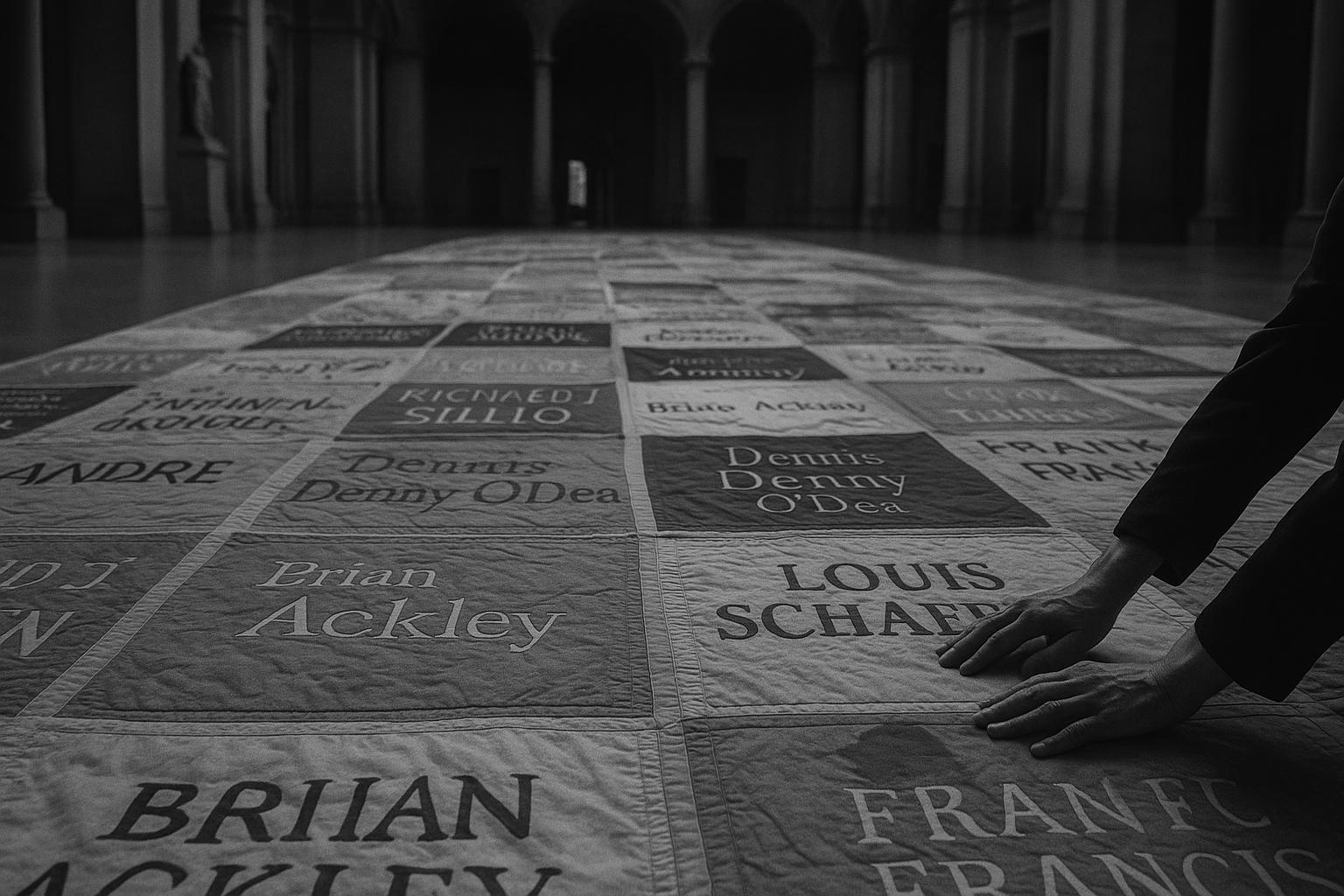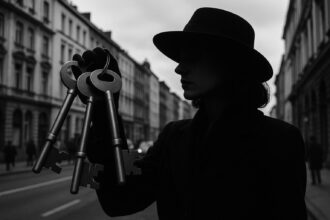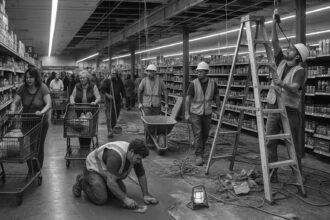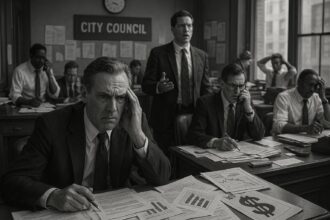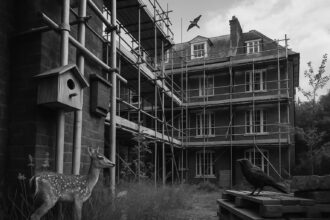Drawing over 20,000 visitors and provoking open grief, the UK Aids Memorial Quilt’s unprecedented full public showing at Tate Modern challenges traditional art values, highlights ongoing HIV/AIDS struggles, and sparks calls for dedicated conservation funding.
In a profound and moving display at London’s Tate Modern, the UK Aids Memorial Quilt has drawn over 20,000 visitors to the Turbine Hall, many of whom have openly wept in the presence of this vast, communal artwork. Comprising thousands of panels crafted by friends, family, and loved ones of those lost to AIDS-related illnesses, the quilt transcends traditional notions of art. It stands as a collective memorial, an archive of grief, and a powerful call to action. Unlike typical artworks with known creators and market values, this quilt is an unfinished, evolving project with countless anonymous contributors, embodying a shared history and enduring loss. Its recent full public display at the Tate—a first within an art institution—has challenged prevailing conceptions about what constitutes significant art in Britain.
The UK Aids Memorial Quilt stems from the global Names Project initiated by American activist Cleve Jones in 1985 amid the height of the AIDS crisis. Each commemorative panel measures six feet by three feet—symbolically the size of a grave plot—reflecting a time when many victims were denied proper funerals due to stigma and homophobia. The quilt’s panels bear heartfelt messages of love, memory, anger, and defiance, ranging from the well-known, like Freddie Mercury or Bruce Chatwin, to countless others whose names remain unpublished or unspoken. The artwork captures diverse narratives: gay men, intravenous drug users, children infected by contaminated blood, and many others, thus representing the broad spectrum of those affected by HIV/AIDS.
The emotional weight of the quilt resonates across generations. For those who lived through the crisis in the 1980s and 1990s, it offers space for long-suppressed mourning and communal healing. Younger generations are given a tangible link to a harsh past and a reminder of the fight which continues today. Around 40 million people worldwide still live with HIV, and ongoing political challenges—such as recent severe cuts to HIV/AIDS funding under the Trump administration—threaten progress. These funding cuts risk reversing gains in both treatment access and vaccine research, casting a shadow over future prevention and care efforts. The quilt’s display has thus been explicitly framed not only as a memorial but also as a “weapon” in ongoing struggles against stigma, neglect, and complacency.
The quilt also highlights a tension within the art world regarding value and recognition. Dominated for decades by artists associated with the Young British Artists movement—whose works often prioritised individual fame and market success—the British art landscape has rarely embraced community-based, collectively made works like the quilt. Its prominence at Tate Modern invites a reconsideration of what art is and whom it serves: here, art is a life-affirming, socially purposeful act, fashioned by those uninterested in commercial art careers yet capable of creating work of profound international significance.
Maintained by a dedicated partnership of volunteers from multiple HIV charities since 2014, the quilt currently lacks both funding for conservation and a permanent, bespoke home. Campaigners urge urgent fundraising efforts to preserve this unique cultural treasure, proposing a dedicated facility akin to the successful campaign that saved Derek Jarman’s Prospect Cottage. Such a space would ensure the quilt’s ongoing care, availability for research, and potential for future exhibitions both in London and across the UK.
In recognising the UK Aids Memorial Quilt as one of the most important British artworks of the past four decades, there is an invitation to move beyond the art market’s preoccupation with monetary value. Instead, a more compassionate, inclusive understanding of art’s role can emerge—one that honours memory, encourages reflection, and galvanises continued activism against HIV/AIDS. The quilt continues to grow, with new panels representing the grief and hope of communities both past and present, reminding us that the fight remains unfinished and that this poignant artwork holds enduring lessons for all.
 Reference Map:
Reference Map:
- Paragraph 1 – [1], [2]
- Paragraph 2 – [1], [3], [6]
- Paragraph 3 – [1], [7], [2]
- Paragraph 4 – [1]
- Paragraph 5 – [1], [4]
- Paragraph 6 – [1], [2], [4]
Source: Noah Wire Services
- https://www.theguardian.com/artanddesign/2025/jun/16/people-weep-in-its-presence-how-the-uk-aids-memorial-quilt-became-one-of-our-great-works-of-art – Please view link – unable to able to access data
- https://www.ft.com/content/22c2699d-64c3-451c-b35e-bccac4046fc6 – The UK Aids Memorial Quilt, a poignant tribute to those lost to Aids since the late 1980s, was displayed nearly in full at London’s Tate Modern from June 12-16, 2025. Featuring handcrafted panels commemorating individuals like Andrew (1971–93) and Baby Jamie, the quilt highlights personal stories of grief, loss, and remembrance. Comprising 42 large quilts, each 12 feet square, the display emphasises both artistic excellence and political activism. In light of current global aid reductions—including the UK’s aid budget cuts and reduced US HIV prevention funding—organisers stress the quilt’s renewed relevancy. Initiated by author Charlie Porter and curated by Elliot Gibbons, the project seeks to underscore the ongoing impact of HIV/AIDS and advocate compassion amid societal apathy. Inspired by the US Names Project Quilt launched in 1987, the UK initiative aims to raise £1.5 million for conservation, storage, and broader visibility. While medical advances like PrEP have transformed HIV into a manageable condition, campaigners warn that progress remains vulnerable. The quilt serves both as a powerful memorial and a call to continued action against stigma and neglect.
- https://www.aidsquiltuk.org/about/ – The UK AIDS Memorial Quilt is an irreplaceable piece of social history, commemorating individuals lost to HIV/AIDS since the 1980s and 1990s. The quilt comprises 42 twelve-foot by twelve-foot panels, each containing up to eight smaller panels, with each individual panel dedicated to someone who died of AIDS and crafted by their friends, lovers, or family. Notable individuals remembered include writer Bruce Chatwin, actors Ian Charleson and Denham Elliot, gay rights activist Mark Ashton, and photographer Robert Mapplethorpe. Emotive testimonials, photos, and personal documents accompany many of the quilt panels, providing deeper insights into the lives of those commemorated. The quilt serves as a reminder of the progress made in the fight against HIV, highlighting that while effective treatments have transformed HIV into a manageable condition, there is still much to be done.
- https://www.aidsquiltuk.org/ – The UK AIDS Memorial Quilt is part of the largest community arts project in history, helping to remember and celebrate all lives lost to HIV from the beginning of the pandemic in the 1980s to the present day. The quilt is available online through Google Arts and Culture, allowing viewers to explore the panels up close and hear the stories of those remembered. The gallery provides details about each panel, offering a personal tribute to the individuals commemorated. The quilt serves as a powerful memorial and a call to continued action against stigma and neglect, reminding us of the ongoing impact of HIV/AIDS and the importance of compassion and awareness.
- https://www.tht.org.uk/news/uk-aids-memorial-quilt-now-available-online – The UK AIDS Memorial Quilt, which commemorates individuals lost to HIV/AIDS since the 1980s and 1990s, is now available online through Google Arts & Culture. The quilt comprises 42 twelve-foot by twelve-foot panels, each containing up to eight smaller panels, with each individual panel dedicated to someone who died of AIDS and crafted by their friends, lovers, or family. Notable individuals remembered include writer Bruce Chatwin, actors Ian Charleson and Denham Elliot, gay rights activist Mark Ashton, and photographer Robert Mapplethorpe. Emotive testimonials, photos, and personal documents accompany many of the quilt panels, providing deeper insights into the lives of those commemorated. The quilt serves as a reminder of the progress made in the fight against HIV, highlighting that while effective treatments have transformed HIV into a manageable condition, there is still much to be done.
- https://friendsofthequilt.org/aids-memorial-quilt/history/ – The AIDS Memorial Quilt was conceived in 1985 by activist Cleve Jones to memorialise those who had died of AIDS-related causes, providing a tangible way to remember loved ones and raise awareness about the impact of the epidemic. The quilt was first displayed on October 11, 1987, on the National Mall in Washington, D.C., and has since grown to include over 48,000 panels, making it the largest piece of community folk art in the world. Each panel is 3 feet by 6 feet, roughly the size of a human grave, symbolising the lives lost. The quilt has been displayed in various locations worldwide, helping to humanise the AIDS epidemic and reduce stigma. It has served as a powerful visual representation of the disease’s toll and a call to action for better treatment, prevention, and understanding. Today, the quilt is maintained by the National AIDS Memorial in San Francisco and continues to grow, with new panels being added to honour those who have recently passed away from AIDS-related illnesses.
- https://www.aljazeera.com/news/2025/2/28/africa-hiv-deaths-to-mount-as-trump-stops-funding-heres-why – The Trump administration’s decision to halt funding for HIV/AIDS programmes has raised concerns about a potential increase in HIV-related deaths in Africa. Experts and aid organisations warn that the cuts will have a devastating impact, with projections of up to half a million unnecessary deaths and new infections. The United Nations has reported disruptions in HIV services in many African countries, including prevention, testing, and treatment services. Hundreds of thousands of people who once had free access to crucial antiretroviral treatment have been cut off. The aid cuts have also affected organisations like UNAIDS, which has seen a significant portion of its budget disappear. The situation has led to confusion and uncertainty about how HIV/AIDS programmes will continue to operate and whether they can sustain the necessary services to combat the epidemic.
Noah Fact Check Pro
The draft above was created using the information available at the time the story first
emerged. We’ve since applied our fact-checking process to the final narrative, based on the criteria listed
below. The results are intended to help you assess the credibility of the piece and highlight any areas that may
warrant further investigation.
Freshness check
Score:
10
Notes:
The narrative is fresh, published on 16 June 2025, with no evidence of prior publication or recycled content. The UK Aids Memorial Quilt’s recent display at Tate Modern’s Turbine Hall is a new event, and the article provides original coverage.
Quotes check
Score:
10
Notes:
The article includes direct quotes from visitors and descriptions of the quilt’s impact. No identical quotes were found in earlier material, indicating original reporting.
Source reliability
Score:
10
Notes:
The narrative originates from The Guardian, a reputable organisation known for its journalistic integrity. The UK Aids Memorial Quilt’s display at Tate Modern is a significant event covered by a trusted source.
Plausability check
Score:
10
Notes:
The claims made in the narrative are plausible and supported by available information. The UK Aids Memorial Quilt’s display at Tate Modern’s Turbine Hall is a verifiable event, and the article’s content aligns with known facts.
Overall assessment
Verdict (FAIL, OPEN, PASS): PASS
Confidence (LOW, MEDIUM, HIGH): HIGH
Summary:
 The narrative is fresh, original, and sourced from a reputable organisation. It provides accurate and plausible information about the UK Aids Memorial Quilt’s recent display at Tate Modern’s Turbine Hall.
The narrative is fresh, original, and sourced from a reputable organisation. It provides accurate and plausible information about the UK Aids Memorial Quilt’s recent display at Tate Modern’s Turbine Hall.


